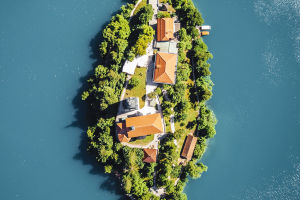Types of Tents
Your tent is crucial for camping trips, picnics, BBQs, festivals, or days at the beach, offering shelter and protection from the weather. Tents vary widely, from lightweight bivy sacks to heavy cabin tents for large groups.
While early tents were thick canvas, today's tents use various materials for different weights and durability, crucial for weather resistance. Modern tents come with features like vestibules, electric hook-ups, gear storage, room dividers, and tall walls for more space. With such diversity, there's a perfect tent for every need!
1. Dome Tent
Dome tents are the most common type today, featuring two flexible poles that cross in the center and anchor to the tent's corners with stakes. This creates a distinctive dome shape, making it easily recognizable. They come in various sizes, accommodating from one person up to about eight, suitable for both backpacking and car camping, whether solo or with a family.
In double-wall designs, there's a breathable inner tent made of no-see-um mesh for ventilation and bug protection, along with a waterproof floor. A rainfly, resting on top of the poles, acts as the second wall. Some tents also include a footprint, an extra fabric layer beneath the tent. Single-wall tents are fully waterproof inside but can be less breathable, sometimes leading to condensation.
Pro Tip: On sunny days, use trekking poles or a tarp with your rainfly to create an awning over your tent door for sun protection and a shaded hangout spot!
Dome tents are lighter compared to other types, offer good headroom depending on their floor size, and are easy to set up. Many include vestibules for gear storage, although not all do. One drawback is that they can catch wind easily, potentially flattening or blowing away if not properly anchored.
2. A-Frame Tent
The A-frame tent, also called the Ridge tent, was once highly favored by campers for its straightforward design resembling the letter A. Initially crafted from canvas with metal or wooden poles, modern versions now feature lightweight materials like nylon or polyester with aluminum poles.
While easy to pitch and notably sturdy, this tent tends to be heavy, bulky when packed, and offers limited headroom.
Camping 101 for Beginners | Useful Knowledge
Video by Useful Knowledge
3. Multi-Room Tent
Multi-room tents are ideal for large families with kids, offering more privacy and space compared to traditional tents. They feature room dividers for privacy and ample storage for gear. These tents are spacious enough to accommodate a large family or group comfortably. However, they tend to be heavy and bulky, requiring more time and effort to pitch. Wind can also pose challenges due to their size.
Despite these drawbacks, multi-room tents are popular for large family gatherings because they provide comfort and plenty of room. Some models can even fit multiple cots or air mattresses, with some offering enough space for a king-size mattress.
Pro Tip: When camping with a large group and multiple large tents, consider reserving a campground that offers group spots. These spots provide multiple tent sites and extra space, allowing your party to spread out comfortably.
4. Backpacking Tent
When embarking on a multi-day hike or trekking a long distance to your campsite, opting for a lightweight or ultralight tent is crucial. These tents, specifically designed for backpacking, are smaller and have a significantly lighter packaged weight and trail weight. This is essential because hikers often carry them many miles into the backcountry, either in or attached to their backpacks.
Backpacking tents are of small size and are made from high-quality materials, which affects their price. They typically feature fewer poles, compact packed sizes, lower peak heights, and limited floor space. While most are designed for one or two people, there are also three-person and four-person options available.
Examples of lightweight backpacking tents include the Big Agnes Tiger Wall, MSR Hubba Hubba, and NEMO Hornet. These tents are designed to balance weight and functionality, making them ideal for backpackers who need to carry their shelter over long distances.
Lykkers, now that you've learned about different types of tents suited for various outdoor adventures, consider which one best fits your camping needs and preferences.
We'd love to hear from you! Which type of tent do you prefer, and why? Share your thoughts and camping experiences with us in the comments below!


